Clifton Integrated Constructed Wetland (2022)
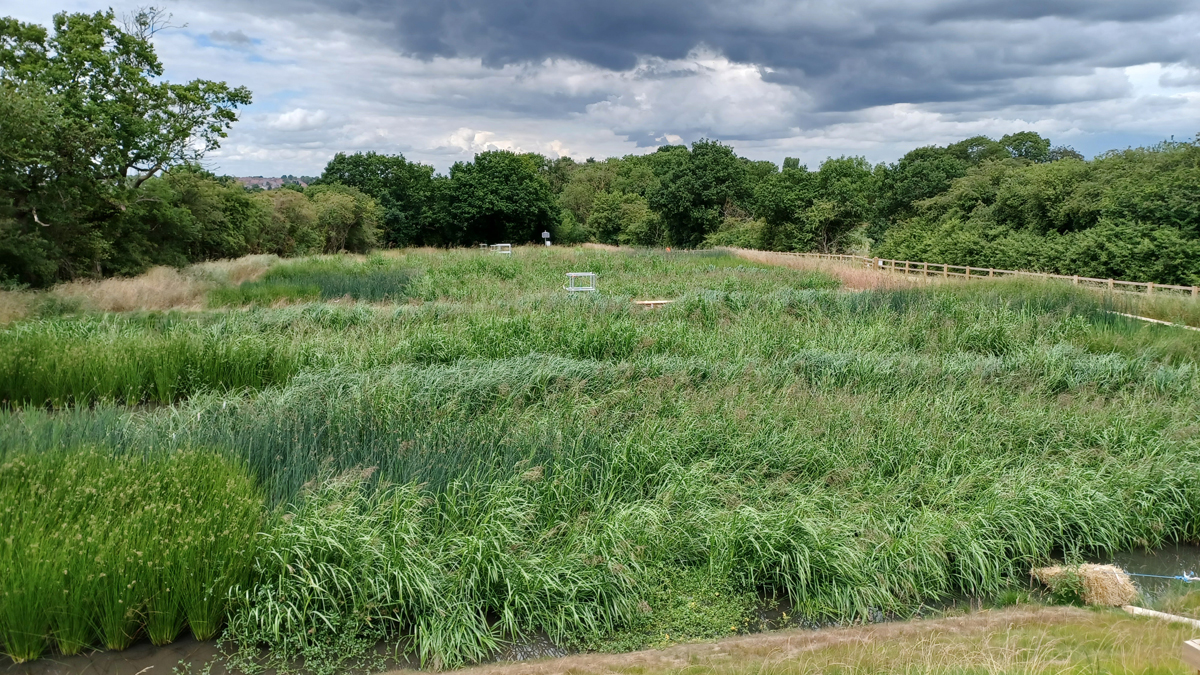
Clifton Wetlands - Ponds with plants and grass well-grown - Courtesy of BarhaleDoosan JV, Stantec UK & Yorkshire Water
Clifton Wetlands is a new, integrated constructed wetland (ICW) built at Yorkshire Water’s Clifton Wastewater Treatment Works (WwTW), near Doncaster in South Yorkshire. It is a ground-breaking project that utilises a nature based solution to replace conventional wastewater treatment processes with a natural, sustainable and low-carbon alternative. Yorkshire Water, the Environment Agency, Stantec UK and Barhale Doosan JV worked together to deliver the project, the first of its type in the UK to be granted an Operating Techniques Agreement. The OTA represents a significant evolution in permitted discharges which shares the risk between the regulator and Yorkshire Water regarding discharge compliance and monitoring as the wetland matures to achieve optimal performance over time. Clifton Wetlands meets the water treatment requirements for around 180 people – approximately half of the population of Clifton village.
Introduction
The works forms part of Yorkshire Water’s ambitious £900M 5-year Asset Management Plan (AMP7). It includes Water Industry National Environment Programme (WINEP)-funded obligations to implement nutrient (phosphorous) reduction measures at 80 regional WwTWs. This is the largest and most complex environmental programme that Yorkshire Water has ever had to deliver. Its commitment to achieving net zero carbon by 2030, coupled with OFWAT’s challenging price determination, means the business cannot rely on traditional, high carbon, chemical dosing methods alone to meet the nutrient reduction requirements.
Process
The Clifton ICW design is based upon decades of research on wetland systems and their ability to improve water quality. Wetlands have demonstrated water quality improvements for over a century. The 20th century has brought about the development of innovative engineering enhancements to treatment wetlands to improve overall treatment performance, increase treatment efficiency and thereby reduce overall footprint. But recent research has also gained an appreciation and further understanding for the complexity of a wetland environment and the benefits brought about by its natural biodiversity and adaptations.
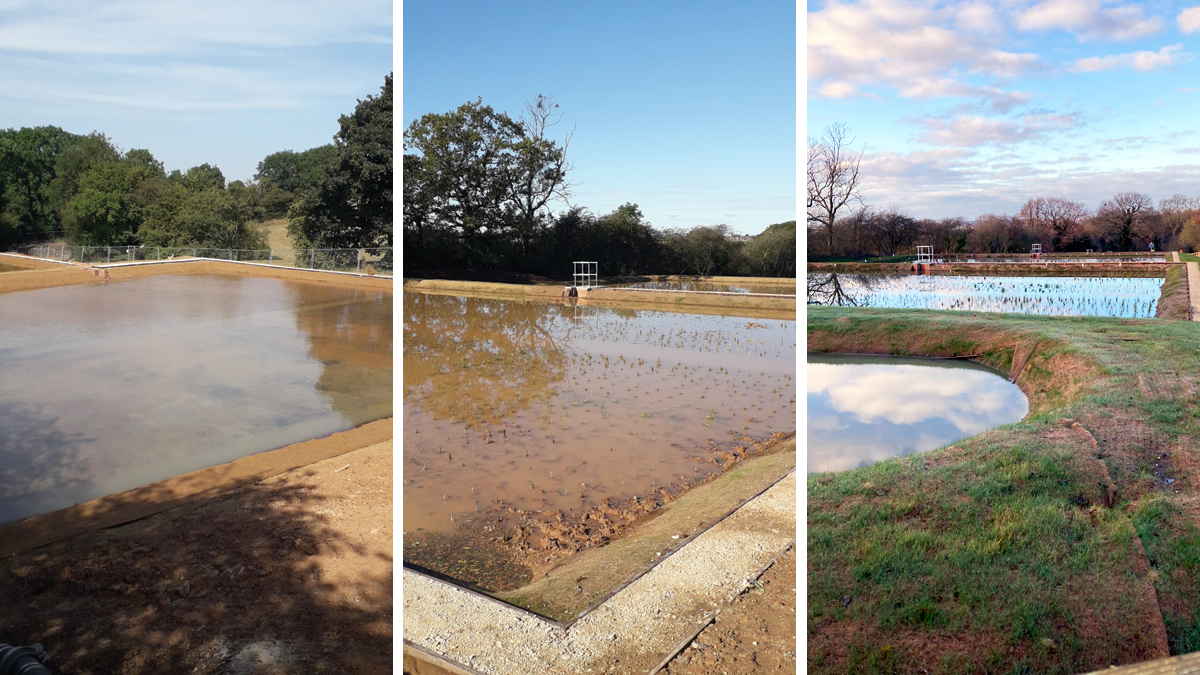
(left) Ponds under construction, (middle) the wetlands shortly after construction, and (right) ponds showing initial growth after construction – Courtesy of BarhaleDoosan JV, Stantec UK & Yorkshire Water
ICW designs are based upon the free water or surface flow constructed wetlands model with a combination of open water and shallow marshes. But ICWs also incorporate restoration ecology to maximize the benefits of enhanced biodiversity and habitat creation built into the topography of the landscape. The ICW concept was developed by the Irish Department of Environment, Heritage and Local Government over 20 years ago to achieve ‘water treatment’, ‘landscape fit’ and ‘biodiversity enhancement’ targets. ICWs are based on the holistic use of land to manage water quality through the restoration of wetlands which once formed an integral part of the environmental and ecological structure of the landscape to control the transfer and storage of water and nutrients.
Conventional wastewater treatment often requires significant mechanical process equipment and chemical usage to remove nutrients and sanitary determinates from wastewater. The Clifton ICW uses natural (i.e., physical, chemical, and biological) processes present in wetlands to provide secondary and tertiary treatment.
The Clifton ICW includes a mixture of open water ponds and shallow vegetated marshes that provide a complex mixture of aerobic and anaerobic environments to sustain a diverse population of microbial activity and plant life. These biological processes are unique to wetland systems and provide the basis for a variety of control mechanisms to operate simultaneously along an extended treatment flow path.
The result is that inorganic and organic constituents can be physically removed through filtration, biologically degraded to non-toxic forms, absorbed by wetland plants, adsorbed to both soil and plant surfaces, or chemically transformed and sequestered within the saturated wetland substrates.
The Clifton ICW design was derived utilizing published design parameters and operational data from real-world systems. International and UK experts worked together to fully develop an outline design. To create the complex biochemistry required to create the conditions for the wastewater treatment a team of geotechnical, ecologists, hydraulic and process engineers worked together to select the plants, determine hydraulic retention times, and engineered the cells to get maximum amount of contact between the wastewater and the wetlands.
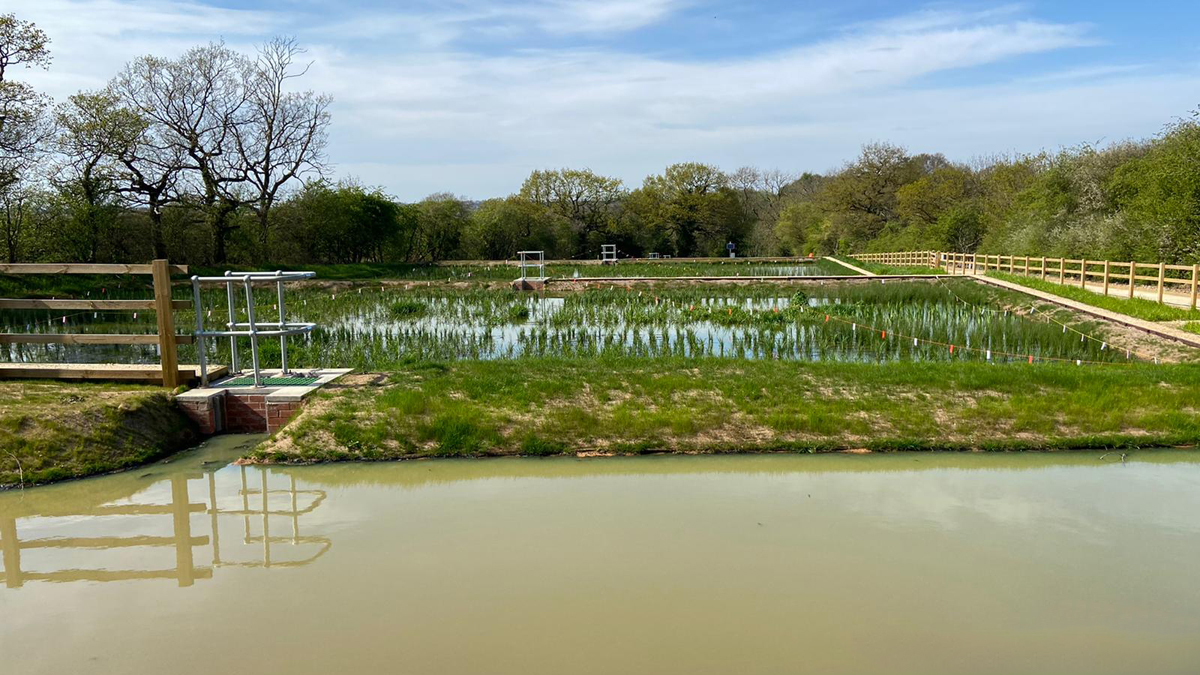
Ponds with plants and grasses beginning to grow – Courtesy of BarhaleDoosan JV, Stantec UK & Yorkshire Water
The first phase of the Clifton ICW treatment process utilises the existing primary settlement tank together with an open water pond to provide 24 hours of primary settlement which reduces the solids and organics load into the subsequent wetland cells by between 15-20%. From the existing primary settlement tank to the open water pond, the flow passes through an inlet flow meter, which monitors the flow into the ICW.
Secondary and tertiary treatment, as defined under the Urban Wastewater Treatment Directive (UWwTD), is then provided in the next four ponds where more than 24,000 newly planted wetland plants work on the removal of the biochemical oxygen demand (BOD) and nutrients, including phosphorus. Secondary treatment is provided in Ponds 2 and 3, which work in parallel.
The plant species in these two ponds are limited to six species which are more robust and can tolerate the higher organic load. Tertiary treatment is provided in Ponds 4 and 5, which incorporate a diverse array of plants (more than 20 species) chosen to provide treatment while also increasing biodiversity.
The Clifton ICW is a fully passive process with flows gravitating through the system with no automatic control elements. The open water zones within each pond are designed to evenly distribute flow into and collect flow out of the shallow marshes to prevent short circuiting and maximize wastewater treatment time within the shallow marshes. Using the natural fall between each pond, rock lined cascades are incorporated to provide aeration as water flows into each pond.
Ponds also include a 100mm bypass pipework which allows for continued operation during cell maintenance. After passing through the ICW, treated water is discharged to the beck via a 150mm diameter outfall pipe, emerging approximately 60m to the north-west of the site.
From the final cell to the outfall, the flow passes through the outlet flow meter which monitors the outlet flow and also in conjunction with the inlet flow meter, monitors for any evaporation across the cells.
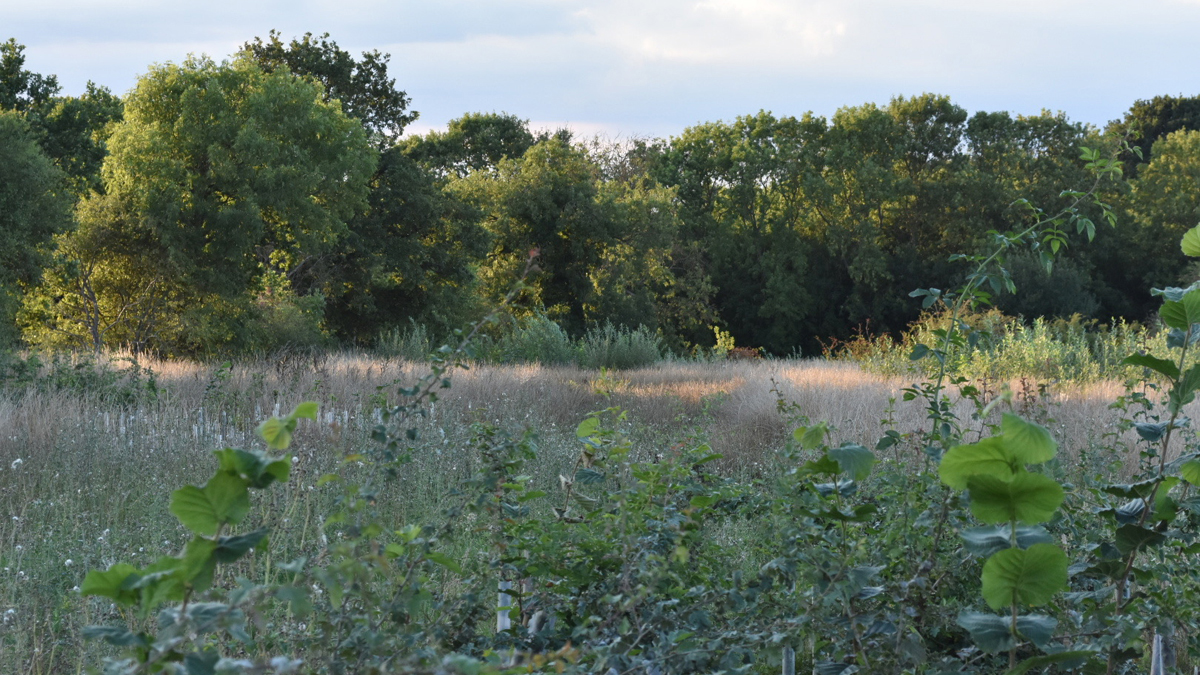
Habitat area created as part of the project – Courtesy of Barhale Doosan JV, Stantec UK & Yorkshire Water
Clifton Wetland: Supply chain – key participants
- Outline design: Stantec UK
- Main contractor: Barhale Doosan JV
- Civils design: Nicholas O’Dwyer
- Site investigations: Geotechnics Ltd
- Plant (machinery) supplier: P Flannery Plant Hire
- Plant supplier for ponds: Salix River and Wetland Services
Construction
The site offered ideal land and ground conditions for a Nature Based Solution approach. The project takes advantage of a natural fall in the 4000m2 site towards a small beck into which treated water is discharged. The ground conditions consisted approx. of 0.5-1m of boggy, nutrient rich topsoil overlying 4-5m of clay.
Moving from a traditional WwTW to an ICW dramatically reduces the requirement for complex physical infrastructure but clever design also plays a part. Construction of the five interconnected ponds took advantage of the natural land contours and the prevailing ground conditions (Pennine Upper Coal Measures – a soft clay with elements of sand and gravel).
Construction required a re-landscaping of the existing site to create the five shallow ponds which were then sealed using the PUCM to form a naturally impermeable clay liner.
The construction methodology dictated starting the cell construction from the lowest point and working systematically up the slope towards the existing works. The use of low ground pressure machines, and mini excavators to form the channels within the cells minimised disruption to the formation of the clay. Each cell was constructed to a depth of 1.1m to be filled with water to 0.5m – the optimal depth to support the flora that makes up the backbone of the Nature Based Solution process.
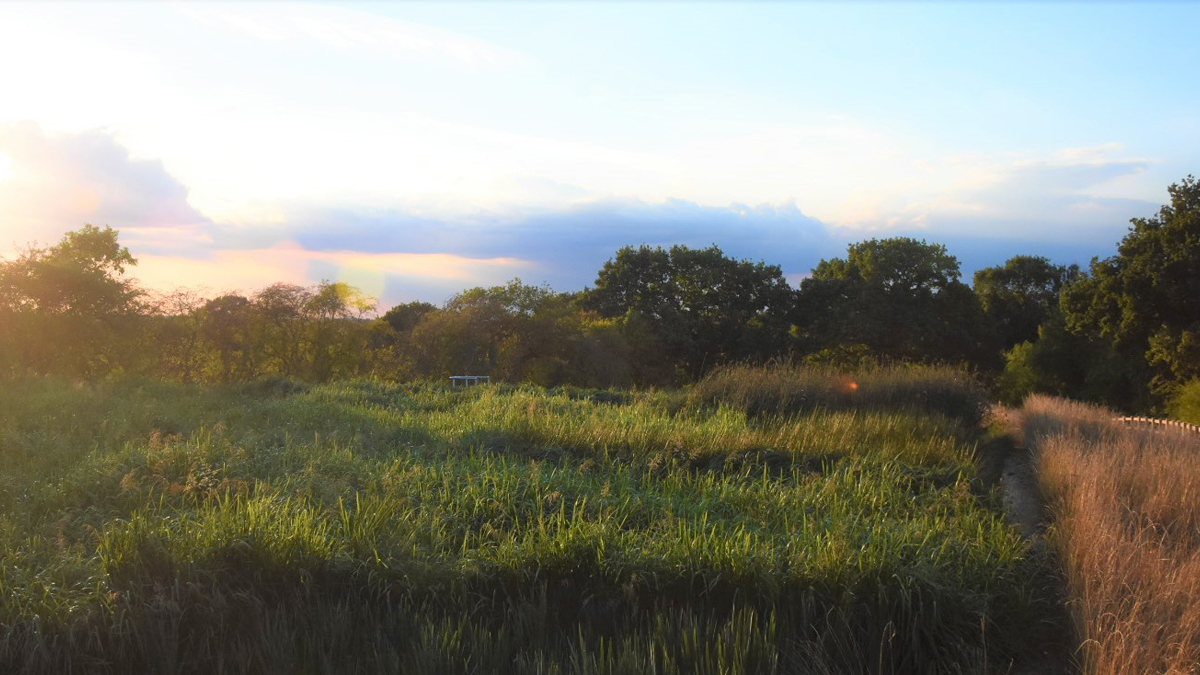
Ponds in August 2022 with plants and grasses well established – Courtesy of BarhaleDoosan JV, Stantec UK & Yorkshire Water
The ponds were surrounded by a clay bund, covered with a GeoJute and planted to create a flower rich grassland which helps stabilise the slopes and creates additional biodiversity and aesthetic appeal.
Traditional carbon heavy materials such as concrete were used as a minimum on site, with the main concrete used for the outfall which followed a Design for Manufacturing and Assembly (DfMA) approach, built off-site and placed in situ to help carbon and health and safety risks. Similar to the outfall, the inlet and outlet chambers were constructed of concrete, which housed the V-notch weirs where the flow control was measured. Both of these weirs were also designed as a DfMA approach.
The clay used was all already on site, which had been determine from ground investigation works in the definition phase of the project prior to design, just increased the projects environmental benefit as no liner materials had to be brought on site to construct the ponds.
The inlet flow meter has been powered by the existing incoming flow and generates around 24v, whereas the outlet flow meter is powered by solar panel and battery backup.
Conclusion
This innovative project showcases the very best details from around the world, concentrated into a single Nature Based Solution. It has demonstrated both performance and gain when compared with a convention wastewater treatment solution. Through construction it reduced the amount of concrete poured and brought down lorry movements. Additionally, no waste was removed from the construction site, protecting the local community from disruption and carbon emissions. The proof of concept established by Clifton will translate into reduced construction costs at future sites.
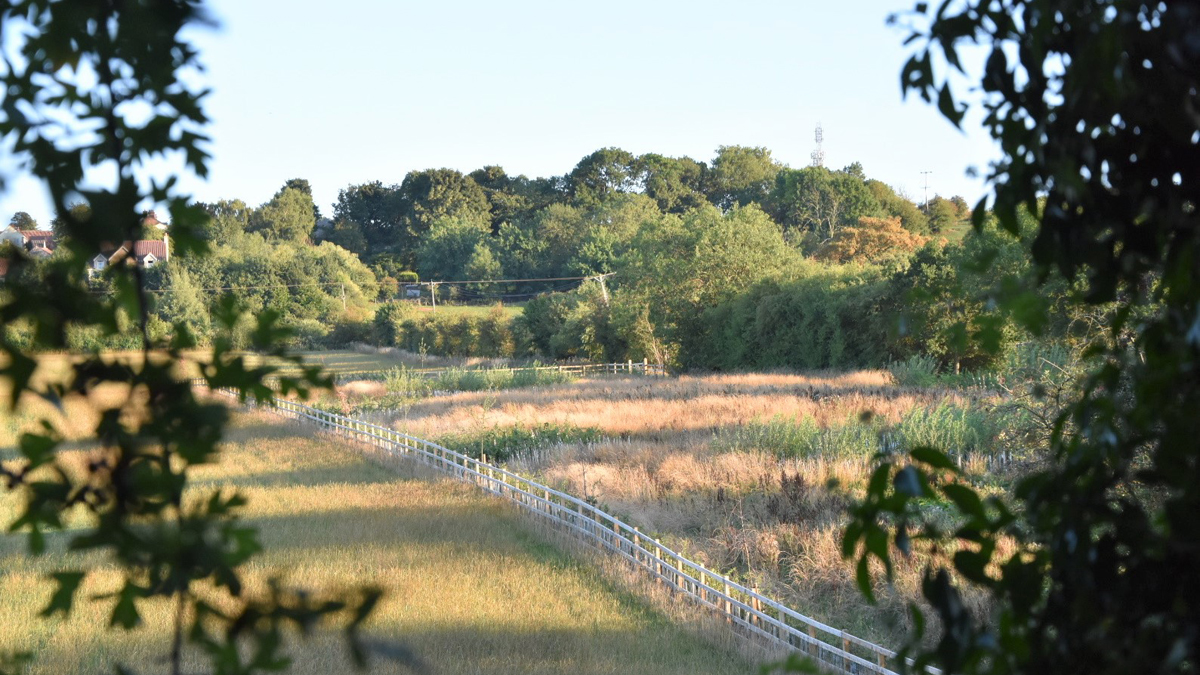
The habitat area created as part of the project – Courtesy of BarhaleDoosan JV, Stantec UK & Yorkshire Water
The passive operation and use of nature-based treatment eliminates the need for energy-heavy chemical treatment processes. Operationally, it lowers the amount of power needed (the monitoring equipment is powered by a small solar array) and avoids reliance on the chemical supply chain. The ICW also slows the flow of water entering the River Don catchment, thereby helping to reduce flood risk and lessening the risks associated with climate change to local communities.
This nature based solution was completed at 35% lower cost than building a conventional solution. The operational costs are also 40% lower. The operational carbon saving is 79% and there is an embodied carbon saving of 50%.
The interconnected ponds stimulate wildlife diversity – achieving biodiversity net gain. The Clifton project enhances its local natural environment with a biodiversity net gain of 2.28 – one of the first biodiversity net gain positive WwTW. It created an opportunity to engage with local communities and plans to invite schools for educational visits, to study the wildlife and plant bug houses.
This innovative solution has positively impacted the industry and attracted attention from various stakeholders, including the Don Rivers Catchment Trust and the Parish Council. The regulatory body OFWAT has visited the Clifton site and plans have been shared to deliver more schemes akin to this one. OFWAT are actively looking at using Nature Based Solution solutions such as Clifton in the next five-year water industry plan (AMP8) across the industry.
Severn Trent Water, Anglian Water and other water companies have visited or are scheduled to see how they can apply the solution in their own areas.
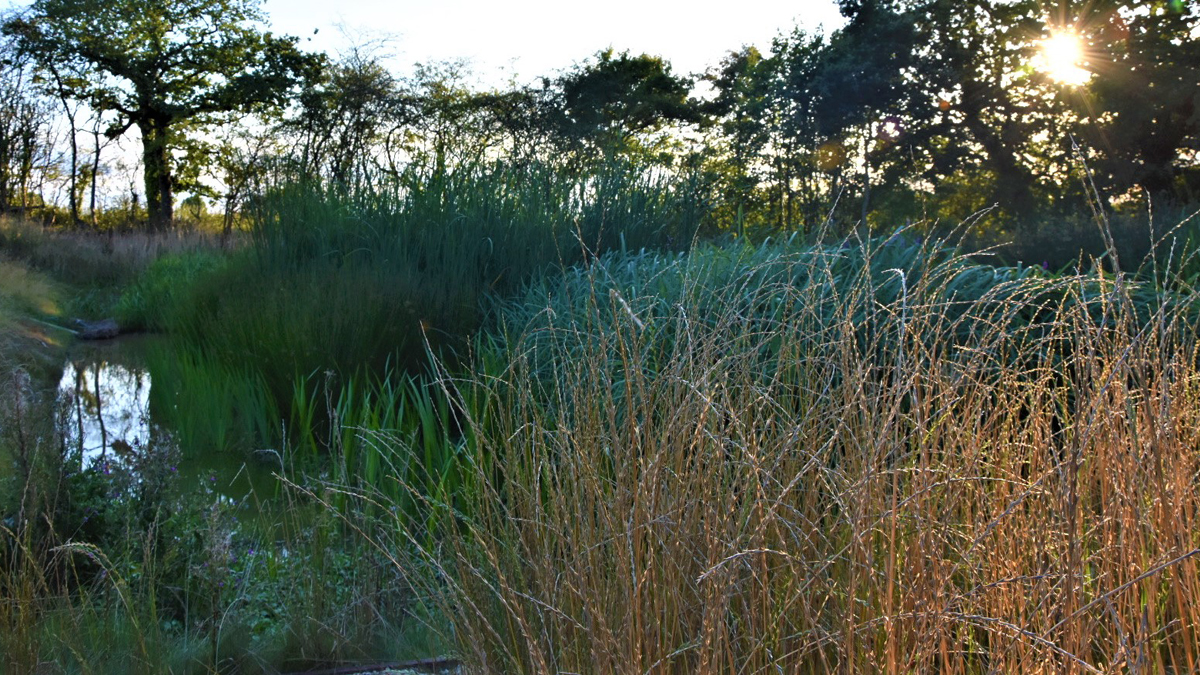
The wetlands in August 2022 – Courtesy of BarhaleDoosan JV, Stantec UK & Yorkshire Water
Clifton Integrated Constructed Wetland is an unique project which offered multiple opportunities for research across many areas, including climate impact, evapotranspiration and nature based solution applicability in the water sector. It provides understanding of how sustainable treatment plants could be adapted across other rural or isolated locations and scaled up for larger plants.
The Environment Agency has supported and worked closely with Yorkshire Water in the development of the project defining how the treatment outcomes should be measured. There is real recognition across both parties on how important the success of this project will be in influencing and driving a real change in more sustainable treatment solutions in future for the water industry.







